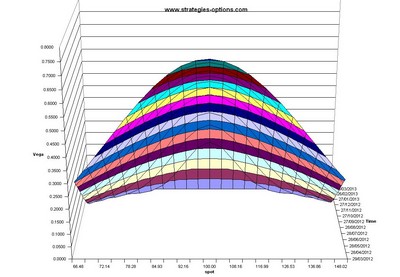
In addition, a competitive pricing strategy can lead to a race to the bottom, where companies constantly try to undercut each other’s prices, leading to lower profits and margins. Finally, this strategy can attract customers who only care about price which can negatively impact customer retention. Competitor-based pricing helps organizations to make sound strategic decisions regarding their products and services.
Scan competitors’ product descriptions, reviews, and specifications to determine how they came up with the price. In a competitive market, prices are largely determined by supply and demand. Market comparables help businesses create boundaries of how much customers will pay for its products. Penetration pricing is when you’re competing against competitors to offer the lowest price. The goal is often to quickly grab consumers’ attention and market share. Price is the most influential factor in seasonal purchasing decisions, beating convenience, delivery speed, and free return options.
- New brands without enough data negate the need for detailed research because they can capitalize on work done by existing competitors.
- So you need a solid data collection system and a deeper pricing analysis.
- Setting a premium price above market value can be effective if the company demonstrates that the product or service is somehow superior to the competition.
- If you’re selling a $50 item compared to a $45 competitor’s product but you still find people purchasing yours, there’s no need to cut the $5 difference and shrink your profit margins.
- At this stage of a consumers search, they have multiple options of where to click, and their decision process will be based on prior experiences, or where they are on their buying journey.
- This makes rapid calculations based on the market rather than painstaking manual calculations or best guesses.
Sometimes referred to as a ‘loss leader’ a company might look to increase their overall market share by reducing the costs of low-value items to increase overall sales. Competitive pricing analysis across your entire product or service range can also help you identify areas of opportunity, e.g. where you could potentially lower prices of some products to grow your market share. You can’t position yourself as a more expensive, but better quality product or service, without a barometer of where your price sits against the competition.
” and then we’ll explore its elements, characteristics of good and bad strategy, and how to develop a winning strategic plan. Be sure to download our Pricing Strategy Guide to get the complete picture on your pricing options and decide on the right strategy for your business. This website is using a security service to protect itself from online attacks. There are several actions that could trigger this block including submitting a certain word or phrase, a SQL command or malformed data. They do it because online shoppers compare prices before deciding where to buy. In this regard, the main challenges pertain to defining one’s competition, establishing congruency between products as well as collecting and analyzing data.
What’s the difference between competitive pricing and demand pricing?
This is compared to other strategies like value-based pricing or cost-plus pricing, where prices are determined by analyzing other factors like consumer demand or the cost of production. Competition-based pricing focuses solely on public information about competitors’ prices, not customer value. Implementing a competitive pricing strategy is the first step to deploying a dynamic pricing strategy.
Being the Lowest Cost Offering is a viable choice for some companies, but you need to either establish how you eventually migrate customers to higher profit options or be careful that your margins don’t disappear. That’s clear in how we’ve seen purchase behavior change over the years on Google Search. Like the one we’ve done here, consumers can easily conduct a price search before buying anything, and nearly all do so.
High price
Pricing is often neglected, which is a shame because it’s your customer’s main consideration (sometimes an incentive, but more often a barrier) before purchasing your product. Pricing your goods or services competitively can also come with inherent disadvantages and risks. For example, if you focus solely on selecting prices for your goods or services based on prices your competitors set, you could have a difficult time covering manufacturing costs or your business’ overhead expenses. When equipped with comprehensive competitor pricing data, implementing a competitive pricing strategy can benefit your business in several different ways.

When you understand how the top competitors in your market are pricing their products and how that pricing might impact customers’ expectations, you have a foundation for setting your new product’s or service’s rates. If you’re in an industry with even one or two direct competitors, you can implement a reasonable competitor-based pricing strategy. In most industries, marketing and product managers will have to do relatively little research to find a competitive price. It is also possible to make adjustments in prices by following tweaks made by competitors.
Top Features
Get a thorough understanding of this pricing data by pooling responses to customer surveys. Your post-purchase confirmation email should ask questions like, “Why did you purchase this product? ” Answers guide you toward completing this section of your competitive analysis table. If your product offers more value to shoppers relative to competitors, set premium prices.
10 Best SUVs With Affordable Maintenance Costs – TopSpeed
10 Best SUVs With Affordable Maintenance Costs.
Posted: Wed, 09 Aug 2023 02:01:00 GMT [source]
Therefore, for the majority of this retailers’ inventory, they’re not price competitive. This particular retailer would require a very strong brand, a very captive customer base that has limited other options, and much more, to be able to justify continuing to display prices at this level. Competitive pricing assumes that businesses already in the market have the correct answer after a lengthy decision-making process. If a large portion of companies prices their product based purely on price comparisons, then with time the entire industry loses touch with demand.
BlackCurve’s “Market Segmentation” chart is my favourite set of analytics we provide. Not only does it display a spread of how competitive you’re relative to each market position such as the “Average Price”, but you can even use the scroll bar along the bottom, to see how this has changed over time. In the example shown, I can see that 1,617 products are priced at the market average price. I can see that a greater number are priced at 10% more expensive than the market average price, and an even greater number priced at 15% more than the market average price. If you’re benchmarking against being the lowest, we would expect to see the tallest bars (showing product counts) between -20, to -10.
Conducting Competitive Price Analysis
With this competitor-based pricing strategy, companies promise to offer the same price as their competitors for identical products. Branding and marketing also allow companies to remain competitive while differentiating themselves. Many businesses, especially startups and small businesses, may choose a competitor-based pricing strategy for several reasons.
How The Chevy Equinox EV Could Give Buick The Boost It Needs … – TopSpeed
How The Chevy Equinox EV Could Give Buick The Boost It Needs ….
Posted: Fri, 04 Aug 2023 20:00:00 GMT [source]
This strategy requires not only improving the product or service itself but making sure customers are aware of the differences that justify the premium pricing, through marketing and branding. A business may set the price below the market and potentially take a loss if the business believes that the customer will purchase additional products from their business once the customer is exposed to the other offerings. The profitability of the other products can then subsidize the economic loss incurred on the below-market priced product. The most common practice is to compare the prices of similar products or services from different companies by looking at online price lists, contacting companies directly, or using a pricing comparison website.
Understanding in-store and e-commerce pricing
There are a lot of factors to consider when you’re looking to set your pricing. There are three main pricing strategies we recommend you investigate to make an informed decision – Cost Plus Pricing, Competitive Based Pricing and Value Based Pricing. If you are a company selling products in a highly competitive market chances are high that customers will compare your prices with alternatives or competitors. Tools such as SYMSON can help extract the data from Google competitive price meaning Shopping or specific websites, benchmark your prices with competitors and position yourself according to your strategy. If you want to gain market share, you could position your products that are price sensitive (Key-Value Items) close to your cheapest competitor, which will probably lead to a higher market share. And when it comes to competition-based pricing, you’ll need to understand your customer mindset as much as you understand your products and services.

Lowering prices (in most industries) leads to doubts about product or service quality and lower revenue from tiny profit margins, even though customers would be willing to pay more. This method is simple because competitors’ prices are most often publically displayed and it is therefore easy to copy them. When products are identical or highly similar (as is widely the case in retail industries), it is often simpler to copy competitors’ prices rather than implement another pricing strategy. With this method, the firm allows its competitors to incur the costs of establishing an optimum price. Another benefit of competitive pricing is that it can help to boost profits.
PROS Platform Summer Release 2023: Elevate Your Business with PROS
The opposite to Lowest Cost Offering, here you’re charging a premium rate and positioning yourself above the competition. To achieve this successfully you need a strong brand and/or differentiation at a product and service level. To maintain this price position you need to continually innovate and stay ahead of the curve.
Innovative businesses inform competitor pricing with dynamic tools like Flintfox’s pricing engine. This makes rapid calculations based on the market rather than painstaking manual calculations or best guesses. With competition-based pricing, companies make three types of pricing decisions — to set prices above, the same, or below their direct competitors. This is a classic example of a company that offers a “best price guarantee”. They claim to check all the prices of their products daily to make sure that they remain the cheapest on the market. Therefore, they will always match the lowest price of their competitors, to give customers the best deal possible.
